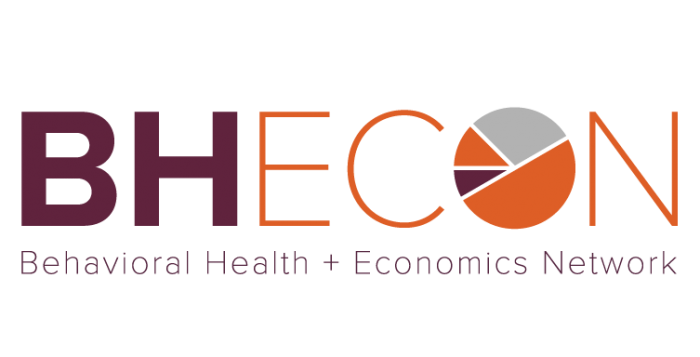RCPA/BHECON Forum on Behavioral Health Workforce Issues
RCPA, in conjunction with the National Council of Behavioral Health, and the Washington, DC-based Behavioral Health & Economics Network (BHECON), will be hosting a forum on Investing in Pennsylvania’s Behavioral Health Workforce. The event will take place on Friday, December 2, between 10:00 am – 3:00 pm at the Crowne Plaza Hotel, 23 South 2nd Street, Harrisburg, PA. There is no charge to attend and lunch will be provided.
The goal of the forum is to bring together diverse stakeholders to examine and advance policy reforms to strengthen the Commonwealth’s behavioral health delivery systems. Some of the issues/topics to be discussed include:
- Identifying programs in Pennsylvania that are doing exceptionally well when it comes to delivery of behavioral health services;
- Discussing the top challenge providers face with regard to workforce;
- Identifying public policies the state needs to change to make recruitment and retention of employees easier;
- Identifying federal policies that are holding providers back from recruiting and retaining employees; and
- Discussing whether the Excellence in Mental Health Act can help providers expand capacity to serve more people in the community, and how Pennsylvania could build on its current Excellence Act activities in the future.
The agenda for the day includes a welcome from the Pennsylvania Lieutenant Governor Mike Stack, a lunch discussion concerning the Department of Labor’s Overtime Rule, and morning and afternoon panel discussions.
There is no registration fee and lunch will be provided. You may register here for the event. Questions and suggestions regarding the forum may be shared with Jack Phillips, director of government affairs.
CDC Webinar on new HAI Models for IRFs
The Centers for Disease Control and Prevention (CDC) National Healthcare Safety Network (NHSN) is the nation’s most widely used health care-associated infection (HAI) tracking system. CDC is implementing a new national baseline for HAI’s that are reported to NHSN. On Saturday, December 10, 2016, NHSN users will be able to run standardized infection ratios for 2015 and 2016 under both the old baseline and the new baseline. Data for 2017 and forward will be available under the new baseline only.
A webinar has been scheduled for Wednesday, November 16, 2016, from 1:00 – 2:00 pm EST, and will include CDC providing an overview of the new HAI models as they relate to inpatient rehabilitation facilities (IRFs). Also to be discussed is the reason HAI data contained within the IRF preview reports may not align with the data in NHSN for the same target period. Registration is required to participate in the webinar; there is no fee to register.
OLTL Releases Draft IEB RFP for Comment
Late on Friday, October 28, the Office of Long-Term Living (OLTL) released a draft Request for Proposal (RFP) for an Independent Enrollment Broker (IEB) to manage the enrollment processes for all OLTL programs. The RFP includes enrollments for Community Health Choices when implemented, Home and Community-based Services Waivers, the Act 150 program, and the LIFE program. Comments are due no later than 5:00 pm on Monday, November 21, 2016, and should be submitted via email by using the drop down menus within the comment template.
Brain Injury Residential Habilitation Vacancy Survey
In order to evaluate if the current rate structure formula used for the brain injury residential habilitation services in the OLTL waivers reflect accurate vacancy assumptions, RCPA is asking providers
IRF Public Reporting Update CDC and NHSN Rebaseline Guidance
As noted in the Rebaseline Timeline posted in the June 2016 National Healthcare Safety Network (NHSN) Newsletter, the Centers for Disease Control and Prevention (CDC) submitted standardized infection ratios (SIRs) to the Centers for Medicare and Medicaid Services (CMS), using the new 2015 baseline starting with 2016 Quarter 1 data. The inpatient rehabilitation facility (IRF) quality reporting program (QRP) preview reports that CMS provided on September 1, 2016, contained calendar year (CY) 2015 healthcare-associated infection (HAI) SIRs in accordance with the new NHSN baselines, based on nationally collected data from 2015. However, providers were unable to use NHSN to verify the accuracy of the HAI data contained within their preview reports for the Compare sites during the 30-day preview period established for this purpose.
As a result, CMS will begin publically displaying the NHSN data on the Compare sites for IRFs in the next quarterly refresh in spring 2017 instead of in fall 2016. Providers will have the chance to appropriately review their HAI data and inquire about data they believe to be incorrect. IRFs will receive preview reports in December 2016 for the data that will be displayed in spring 2017.
This change will affect the posting of quality performance data on the quality measure: NHSN Catheter-Associated Urinary Tract Infection (CAUTI) Outcome Measure.
When the IRF Compare website is launched in fall 2016, the following quality metrics will be displayed:
IRFs —
- Percent of residents or patients with pressure ulcers that are new or worsened (short stay); and
- All-cause unplanned readmission measure for 30 days post-discharge from inpatient rehabilitation facilities.
To assist IRFs in understanding the use of the rebaselined data, and how to monitor their data using the new baseline, a document has been posted in the downloads section of the IRF Quality Public Reporting web page.
Changes to OLTL Home and Community-based Waivers
Today, the Office of Long-Term Living (OLTL) issued communication on changes to four OLTL home and community-based services waivers that were recently approved by the Centers for Medicare and Medicaid Services (CMS).
The changes include:
Aging Waiver amendments (effective 10/1/16)
- Introduces the department’s intent to transition individuals from the Aging waiver into a managed care delivery system;
- Revises language to reflect the current practice under the new child abuse clearance laws;
- Breaks out the home health and therapeutic and counseling service definition into five discreet service definitions; and
- Adds a new entity to perform waiver enrollments.
Attendant Care Waiver amendments (effective 10/1/16)
- Introduces the department’s intent to transition individuals from the Attendant Care waiver into a managed care delivery system; and
- Revises language to reflect the current practice under the new child abuse clearance laws.
Independence Waiver amendments (effective 10/1/16)
- Adds five new employment-related service definitions* which are replacing one existing employment service definition;
- Breaks out the Home Health and Therapeutic and Counseling service definition into eight discreet service definitions;
- Introduces the Department’s intent to transition individuals from the Independence waiver into a managed care delivery system; and
- Revises language to reflect the current practice under the new child abuse clearance laws.
CommCare Waiver amendments (effective 10/1/16)
- Adds five new employment-related service definitions* which are replacing two existing employment service definitions;
- Breaks out the home health and therapeutic and counseling service definition into eight discreet service definitions;
- Introduces the department’s intent to transition of individuals from the Independence waiver into a managed care delivery system; and
- Revises language to reflect the current practice under the new child abuse clearance laws.
OBRA Waiver renewal (effective 7/1/16)
- Renewal of the waiver for an additional five years;
- Introduces the department’s intent to transition individuals from the OBRA waiver into a managed care delivery system;
- Breaks out the home health and therapeutic and counseling service definition into eight discreet service definitions; and
- Revises language to reflect the current practice under the new child abuse clearance laws.
*New employment-related services are benefits counseling, career assessment, employment skills development (replaces prevocational services), job coaching (replaces supported employment), and job finding. For complete service definitions, provider qualifications, and requirements of each waiver, please refer to the approved waiver documents.
Providers of these new services will be paid at the proposed rates. Information on implementation of the new employment services, including transition from current employment services and billing procedures, is forthcoming.
In addition to the above changes, CMS has required OLTL to add limitations to any waiver services that are state plan services and are available to individuals under the age of 21. These services include: assistive technology, counseling, nursing services, nutritional consultation services, occupational therapy, personal assistance services, physical therapy, specialized medical equipment and supplies, and speech and language therapy. These services are only to be provided to individuals aged 21 and over. All medically necessary services for children under age 21 are to be covered in the state plan pursuant to the EPSDT benefit.
Questions on this information may be referred to either OLTL’s Bureau of Quality and Provider Management at 800-932-0939 or Bureau of Policy and Regulatory Management at 717-783-8412.
ReelAbilities Film Festival Showcases a Wide Range of People Living With Disabilities
Institute for Healthcare Improvement Free Health Care “Talk Show”
Children’s Champions — Thank you for This Privilege!
My Dear Friends, Colleagues, and Fellow Children’s Champions:

















